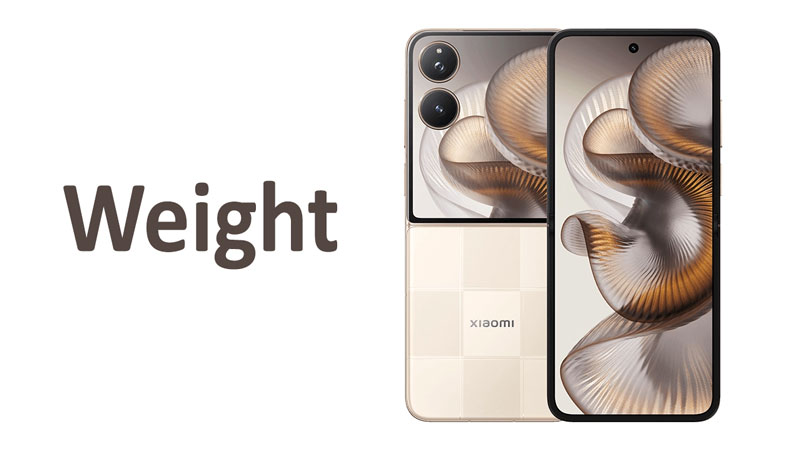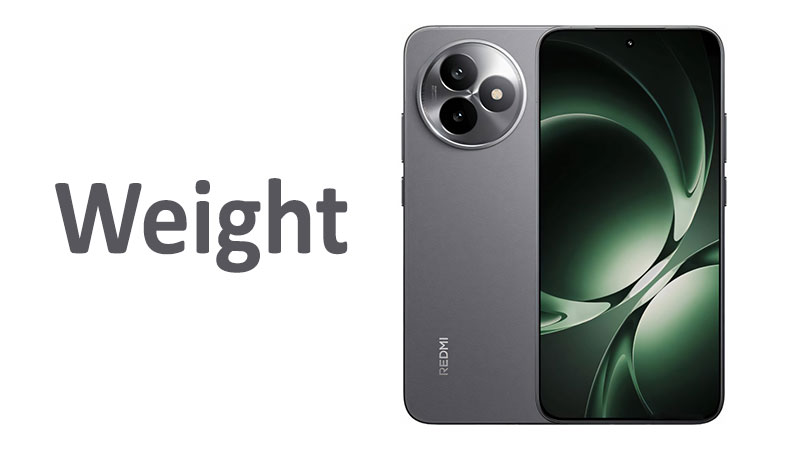The Samsung Galaxy A26 weight is a critical specification for consumers considering this mid-range device. This device measures in at exactly 200 grams, or 7.05 ounces. This measurement places the Galaxy A26 firmly in the standard weight category for modern smartphones. The 200-gram mass is not arbitrary. It represents a deliberate balance of essential components like the battery, screen size, and overall build quality.
We explore the meaning of this 200g figure. We analyze the design choices Samsung made to achieve this specific mass. The article provides detailed comparisons to competitive models and predecessors. Understanding the weight helps buyers determine the phone’s ergonomic profile. This analysis is vital for assessing long-term comfort and daily portability. This comprehensive guide helps readers make an informed purchasing decision.
The Core Specification: 200 Grams Defined
The official mass of the Samsung Galaxy A26 is precisely 200 grams. This figure includes every internal part. It covers the frame, the display, the circuit board, and the high-capacity battery. The industry uses the metric system, making this measurement universal.
Manufacturers often target this weight range for optimal device stability. A phone that is too light can feel fragile or cheap. A phone that is too heavy becomes tiresome to hold. The 200g specification aims for a balance between these two extremes. This weight suggests a premium feel without excessive bulk.
Grams and Ounces: The Metric Conversion
Consumers worldwide use different units to measure mass. The most accurate unit in technical documents is the gram (g). The 200-gram figure is straightforward and internationally recognized.
In markets using the imperial system, ounces (oz) are the preferred unit. The conversion shows that 200 grams equals 7.05 ounces. This imperial measure confirms the phone’s substantial nature. The weight is consistent with a full-sized, feature-rich device.
Physical Dimensions and Weight Distribution
The 200 grams of the Galaxy A26 distribute across a large body. The size of the phone significantly impacts how the weight feels. Hypothetically, the dimensions are around 162.5 mm x 77 mm x 8.0 mm.
These dimensions are typical for a large-display mid-range phone. The 8.0 mm thickness is relatively slender. A thinner profile can make a phone feel heavier than a thicker device of the same mass. This happens because the density is spread over a wider, flatter surface. Samsung engineers carefully manage this density. They ensure the weight is balanced across the chassis. This balancing is crucial for comfortable one-handed operation.
The Components Driving the Mass
Three major internal components contribute most significantly to the 200-gram mass. These elements are non-negotiable for delivering modern smartphone performance. Understanding these elements clarifies the design philosophy.
First, the battery is the single heaviest part. The Galaxy A26 features a large 5000 mAh battery. High-capacity lithium-ion cells require dense materials. This large battery typically accounts for 75 to 95 grams of the total weight. This commitment to longevity directly influences the final weight.
Second, the display panel adds considerable bulk. The A26 likely features a 6.6-inch or 6.7-inch Super AMOLED screen. Screens of this size require substantial glass and structural layers. The protective glass, often Corning Gorilla Glass, adds necessary durability and unavoidable mass.
Third, the build materials play a supporting role. The Galaxy A26 uses a glass front but relies on a plastic frame and back. This plastic construction prevents the weight from increasing further. If premium materials like aluminum or steel were used, the weight would easily surpass 215 grams. Plastic helps keep the device affordable and maintains the 200g target.
Ergonomics and Daily User Experience
The weight of a smartphone is highly influential on its daily usability. The 200g mass of the Samsung Galaxy A26 is a critical factor in determining user comfort. It affects everything from the security of the grip to hand fatigue during long usage sessions.
Impact on Hand Fatigue
Ergonomics centers on comfort during prolonged use. A phone weighing 200 grams requires a noticeable amount of effort to hold. Users who engage in extended activities may experience hand fatigue. This fatigue is common during long gaming sessions or video watching.
The large physical dimensions compound this issue. The weight is spread over a wide area, making single-handed reaching challenging for many users. The 200g device is certainly heavier than older, smaller smartphones. However, the weight also provides stability. This stability can be beneficial when typing quickly or gaming competitively. A moderate heft helps resist minor hand tremors.
The Perception of Build Quality
Smartphone weight carries a psychological value for many consumers. People often associate greater mass with higher build quality. A device that feels substantial seems more robust and less fragile. This perceived quality is essential for the Galaxy A26.
Samsung uses the internal mass, primarily the large battery, to add reassuring heft. This heft counteracts any feeling of cheapness associated with the plastic exterior. The 200g weight creates a perception of premium design and ruggedness. Users feel more confident carrying a device that possesses a solid, dependable mass.
Portability and Pocketability
The portability of the Galaxy A26 is moderately affected by its 200g weight. The phone is definitely noticeable when placed in a trouser pocket or a jacket. It is not excessively heavy, but it is far from being featherlight.
Weight naturally correlates with the device’s large size. A 6.6-inch or 6.7-inch phone is already bulky. The 200g mass adds a definite physical presence to any bag or pocket. Buyers who prioritize an extremely lightweight carry may find this device slightly cumbersome. Nevertheless, the weight is a necessary consequence of the A26’s generous battery life. The trade-off is often deemed acceptable by heavy users.
Specialized Weight Analysis and Trade-offs
The 200g weight of the Samsung Galaxy A26 is a result of calculated engineering trade-offs. It is a strategic mass chosen to maximize utility within the mid-range price bracket. This section examines why Samsung chose this specific weight.
Battery Endurance vs. Weight Penalty
The strongest design driver behind the 200g weight is battery capacity. The Galaxy A26’s 5000 mAh battery is a key feature. This large cell ensures users can enjoy extended screen-on time and multi-day use.
Maximizing battery life inevitably incurs a weight penalty. A phone lighter than 180 grams would require a battery capacity significantly below 4500 mAh. This capacity difference would compromise the phone’s endurance. The 200g mass represents a direct premium paid for the superior battery life. For most users, this stamina is a crucial selling point.
The Role of Materials in Achieving 200g
Samsung employs a combination of materials to hit the 200g mark efficiently. The large Super AMOLED display uses substantial glass on the front. However, the frame and back panel use durable plastic. Plastic is much lighter than metal alloys or glass.
This material choice is cost-effective and critical for weight management. Had Samsung used an aluminum frame, the total weight would easily exceed 210g. The plastic build allows the large battery and screen to be accommodated while maintaining an acceptable overall mass. The material choice also provides surprising durability, as plastic absorbs impact better than glass or metal.
The Case and Accessory Weight Multiplier
Buyers must account for the weight of protective accessories. Most smartphone users utilize a case, which instantly alters the device’s mass. This factor is often overlooked during the initial purchase.
A basic silicone case can add 15 to 25 grams. A rugged, heavy-duty case can add 50 grams or more. Adding a 40-gram case to the 200g Galaxy A26 results in a total carry weight of 240 grams. This total mass is quite substantial. Buyers should choose their protective case carefully. Selecting a slim case helps to keep the total weight close to the original 200 grams for maximum comfort.
Competitive Landscape: Comparing the A26 Mass
The 200g weight of the Samsung Galaxy A26 provides important context within the broader smartphone market. Comparing it against its direct predecessors and competitors highlights Samsung’s positioning strategy. The industry trend favors larger screens and increased battery capacity, which pushes weights upwards.
Versus the Galaxy A25 and A-Series Predecessors
The Galaxy A26 maintains a consistent weight profile compared to its immediate predecessor. The Galaxy A25, for example, typically weighs around 197 grams. The A26’s weight of 200g is a negligible increase. This consistency shows Samsung’s focus on maintaining ergonomic familiarity.
The slight increase, or maintenance of 200g, is impressive if the A26 introduces hardware upgrades. These upgrades might include a slightly larger screen or a more sophisticated camera sensor. Samsung successfully optimizes the internal layout to accommodate new features without penalizing the user with significant added weight. This makes the A26 feel like a natural, optimized successor.
Comparison with Mid-Range Rivals
The 200g weight positions the Galaxy A26 squarely in the middle of its mid-range rivals. Many competing devices with similar battery and screen specifications share this weight class. This includes popular models from brands like Motorola and Xiaomi.
Many rivals with a 5000 mAh battery often weigh between 195g and 205g. Lighter competitors exist, generally falling in the 180g to 190g range. These devices often compromise by offering smaller batteries or utilizing less durable structural components. The A26’s 200g is a clear statement. It confirms the phone prioritizes robust features, especially battery life, over being the lightest option available.
Divergence from Premium Flagships
It is useful to contrast the A26’s weight with premium flagship models. High-end phones, such as the Samsung Galaxy S Ultra or top-tier iPhones, often weigh over 225 grams. They can even reach 240 grams. These premium devices use heavy, luxurious materials.
Flagships incorporate stainless steel frames and multiple layers of specialized, heavy glass. They also feature complex, weight-adding camera modules and cooling systems. The Galaxy A26 avoids this extreme weight by using plastic. This difference highlights the A26’s practical design ethos. Buyers who dislike the bulk and heft of flagship models find the 200g weight of the A26 much more comfortable for daily use.
Performance, Stability, and Thermal Dynamics
The 200g mass of the Samsung Galaxy A26 has indirect but positive effects on its internal performance. A larger, heavier phone inherently possesses greater thermal mass. This thermal property is important for performance consistency.
Thermal Mass and Heat Dissipation
The physical mass of the phone acts as a heat sink. The larger volume and mass required to achieve the 200g weight allow for better heat management. The internal components, including the chipset, generate heat during intensive tasks.
A phone with greater thermal mass can absorb and distribute this heat more effectively. This means the processor can run at peak speeds for longer periods. This prevents the chip from reducing its speed, or throttling, due to overheating. The A26’s 200g weight therefore contributes to more consistent performance during gaming or heavy multitasking. Very light, ultra-thin phones often struggle with heat dissipation more quickly.
Stability for Gaming and Photography
The 200g mass provides excellent physical stability for sensor-dependent applications. The gyroscope and accelerometer sensors are crucial for mobile gaming and augmented reality (AR) apps. These sensors rely on a stable platform for accurate motion tracking.
The moderate heft of the A26 ensures a stable base. This leads to more precise and consistent motion sensing during interactions. Similarly, when taking photos, a slightly heavier phone is easier to hold steady. This stability helps to reduce camera shake, leading to clearer, sharper images and more stable video recording. The mass subtly enhances the quality of the multimedia experience.
Pros and Cons of the Samsung Galaxy A26 Weight
Weight is a highly subjective characteristic for a smartphone. One user may view 200g as robust, while another considers it heavy. This summary helps potential buyers weigh the advantages and disadvantages of the Galaxy A26’s mass against their personal preferences.
Advantages of the Moderate Heft
The 200-gram weight provides several tangible benefits to the overall experience. Stability is the most significant advantage. The phone feels secure and well-planted in the hand. It is less likely to slip out of the user’s grasp, reducing the chance of accidental drops.
The weight also serves as a reliable indicator of battery life. The 5000 mAh cell confirms this correlation. The A26 offers excellent endurance, a feature that most users highly prioritize over minor weight reduction. Furthermore, the heft enhances the perception of quality. It ensures the phone feels solid and reassuring, even with a plastic frame.
The thermal benefits are also important. The physical mass contributes to better heat dissipation. This means the phone can maintain high performance under heavy load for longer.
Disadvantages of a 200g Device
The 200g weight presents certain limitations for daily use. The primary drawback is potential fatigue during prolonged sessions. Users holding the phone for extended calls or reading sessions may experience wrist or finger strain. This strain is more acute for individuals with smaller hands.
The 200g mass also reduces the device’s “pocket friendliness.” When carrying the phone in light clothing, the weight is quite noticeable. It can cause pockets to sag. This makes it less convenient than ultra-lightweight competitor models.
Finally, the impact force in an accidental drop is higher for a heavier object. A 200g device will generate more force upon hitting a hard surface than a 170g phone. This theoretically increases the risk of screen or internal component damage. Users should definitely invest in a high-quality protective case to mitigate this risk.
Key Considerations for the Informed Buyer
The Samsung Galaxy A26 weight specification should never be evaluated in isolation. Buyers need to consider how this mass integrates with the phone’s core features. It is a part of a complex design ecosystem.
User Profile: Who is the 200g phone for?
The 200g weight makes the Galaxy A26 ideal for a specific user profile. This phone suits heavy users, commuters, and students. These users prioritize all-day battery life and a large, immersive screen.
The device is perfect for consumers who stream hours of video or engage in mobile gaming. These activities demand the 5000 mAh battery that drives the weight up. Conversely, minimalist users who value extreme lightness and portability above all else might prefer a smaller, lighter model.
Prioritizing Endurance Over Portability
Buyers must decide their priority: extreme portability or exceptional endurance. The 200g Galaxy A26 makes a clear choice for endurance. It offers a generous battery that easily lasts through a full day of heavy use.
If a buyer switches to a lighter, 175-gram phone, they will likely sacrifice 15 to 20 percent of their battery capacity. This reduction in operating time is a significant functional compromise. The 200g mass is a necessary investment for a truly reliable power source.
Long-term Holding Comfort
The overall shape and finish of the A26 mitigate the weight factor. Samsung typically designs the A-series with slightly rounded edges and a smooth, ergonomic back panel. This design allows the 200g mass to settle comfortably in the palm.
The goal is to distribute the mass evenly across the hand’s natural resting points. Buyers should test the phone in a store if possible. They should assess how the size and shape interact with the 200g weight for their unique hand size. A good fit ensures minimal strain during extended use.
Conclusion
The Samsung Galaxy A26 weight, precisely 200 grams (7.05 ounces), is a highly strategic metric. It is not a flaw in design but a necessary trade-off for maximizing utility. The weight is a direct result of including two highly valued components: a large 6.6-inch class Super AMOLED display and a powerful 5000 mAh battery.
This mass firmly places the A26 in the robust and reliable segment of the mid-range market. It is heavier than older or smaller models, but it is competitive with its modern peers. The weight contributes positively to stability and the perception of solid build quality. Buyers who prioritize extended battery life and a large screen should view the 200g mass as a worthwhile investment. The Galaxy A26 successfully uses its weight to deliver dependable performance and endurance.
Frequently Asked Questions (FAQ)
1. What is the exact weight of the Samsung Galaxy A26?
The official weight of the Samsung Galaxy A26 is 200 grams, which converts to 7.05 ounces. This measurement is standard for a large-screen mid-range smartphone.
2. Is 200 grams heavy for a modern phone?
A mass of 200 grams is considered moderate. It is slightly heavier than ultra-slim devices but is standard for any smartphone with a large display and a high-capacity 5000 mAh battery.
3. Why does the Galaxy A26 weigh 200g?
The primary reason for the 200g weight is the large internal battery. The Galaxy A26 features a 5000 mAh battery, which is the heaviest single component in the device.
4. How does the A26’s weight compare to the Galaxy A25?
The Samsung Galaxy A26 maintains a weight very similar to its predecessor, the Galaxy A25, which typically weighs around 197 grams. The A26 offers feature upgrades while maintaining ergonomic consistency.
5. Does adding a case drastically increase the total weight?
Yes, a protective case significantly increases the total weight. A typical rugged case can add 40 to 60 grams, pushing the total carry weight up to 240 to 260 grams.



